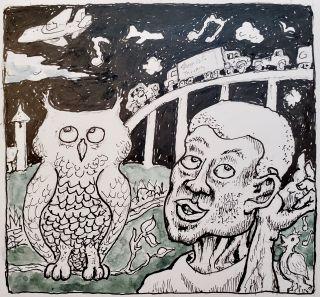STRESS- Can Soundscape Tuning Improve Your Quality of Life? Dampen noise. Boost relaxing sounds. Cut stress. The tools are available. Reviewed by Vanessa Lancaster

KEY POINTS-
- "Soundscape studies" involves canvassing neighborhoods for both pleasant sounds and annoying noise.
- Soundscape studies analyze how the sounds of a given area affect the inhabitants' quality of life.
- Reducing traffic and construction noise and boosting pleasant sounds may reduce our stress.

What if we could improve our mental health by analyzing and even tuning the sound environment in which we live?
Shouldn't this, after all, be feasible for everyone? We have learned a great deal about sound over the last few decades. For example, we know that even deep space holds sound; gas spun off from a black hole in the Perseus galaxy generates a deep b-flat (57 times lower than the human ear can detect) through the supposed void of space. Gravitational waves create a form of sound—like a regular chirp in the midst of jet-engine noise—as captured by the LIGO detector (and later amplified) in 2015.
Earth itself plays a deep frequency, a 10 millihertz hum probably stemming from the beating of deep waves against the drum of the Pacific Ocean—though this may have nothing to do with the "global hum" perceived by many.
And scientists are learning more daily about the difference between the sounds a healthy natural environment generates, as opposed to what an unhealthy one makes. A largely unspoiled country environment is an orchestra of insect and bird noises; a sick meadow is silent; a healthy coral reef generates music from fifteen species while dying coral plays only the single backbeat of snapping shrimp.
The opposite can hold true in diagnosing a human acoustic environment, where silence is often hard to come by. Our post-industrial civilization, soaked in traffic and construction, makes so much noise it damages the health of the humans who comprise it. According to the European Environment Administration, "Traffic noise annoys almost 20 million Europeans and disturbs the sleep of an estimated eight million. Environmental noise is also linked to approximately 43 000 hospital admissions, 900 000 cases of hypertension and up to 10 000 premature deaths per year."
But scientists and ecologists are evolving ways to measure the overall health of natural and human environments. This discipline, named by R. Murray Schafer in 1977, is known as "soundscape studies." It aims to analyze how the sounds of a given area affect the inhabitants' quality of life, using a multidisciplinary approach that analyzes both positive and negative acoustic input.
For natural environments, ecologists' microphones running 24/7 record the number and frequency of birds, animals, and reptiles by their sounds. As with the coral reef, being loud and numerous usually indicates health and ease of communication. But measuring the human quality of life requires more specific analysis.
For example, does the sound around stress relax you? Building noise and road traffic (of the kind assessed in the European example above) are likely to irritate–as also demonstrated in ongoing noise level measurements around massive new Amazon warehouses in Red Hook, Brooklyn1–but birdsong or the sound of water splashing in a fountain, or the laughter of children in a playground, tend to soothe.
The hourly chiming of a church bell not only signals time but can evoke community; it also offers an acoustic landmark that reassures our subconscious brain, at least, that the village is not far away.
The tools of soundscape analysis, of course, include decibel meters (which nowadays can be downloaded as a smartphone app) and "sound maps" that chart levels and types of sound in a given locality, but also feedback garnered through "sound walks" or "Passungen"–comprehensive interviews with locals met while exploring a neighborhood. An awareness of such techniques can help us analyze and tune the soundscape of our own living spaces by such varied methods as investing in double-glazed windows, creating a garden fountain, or asking Siri to play wave sounds.
Various other methods are available for correlating and quantifying information gathered in this way, but the "triangulation" of data that results can open up new perspectives for humans who might not be aware of how big a role the soundscape, good or bad, plays in their quality of life.
- Questions and Answers
- Opinion
- Motivational and Inspiring Story
- Technology
- Live and Let live
- Focus
- Geopolitics
- Military-Arms/Equipment
- Segurança
- Economy
- Beasts of Nations
- Machine Tools-The “Mother Industry”
- Art
- Causes
- Crafts
- Dance
- Drinks
- Film/Movie
- Fitness
- Food
- Jogos
- Gardening
- Health
- Início
- Literature
- Music
- Networking
- Outro
- Party
- Religion
- Shopping
- Sports
- Theater
- Health and Wellness
- News
- Culture

